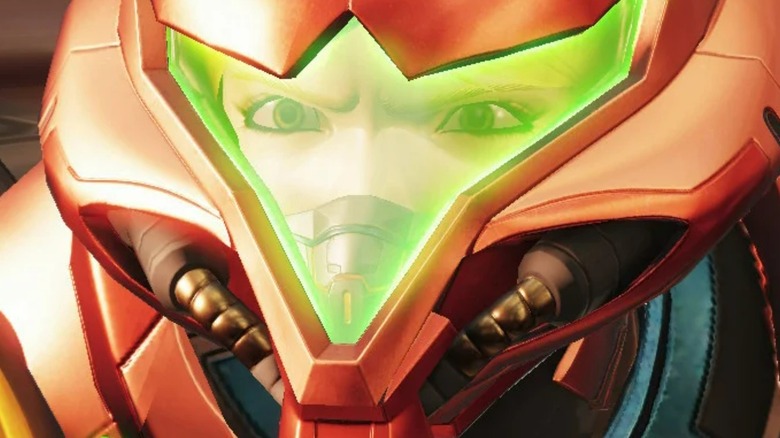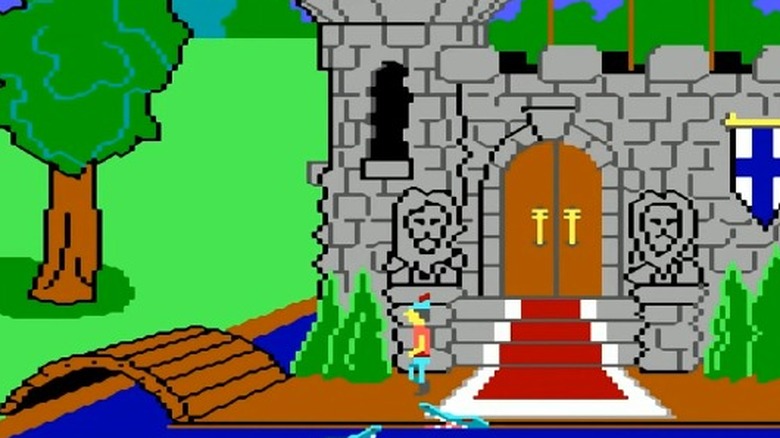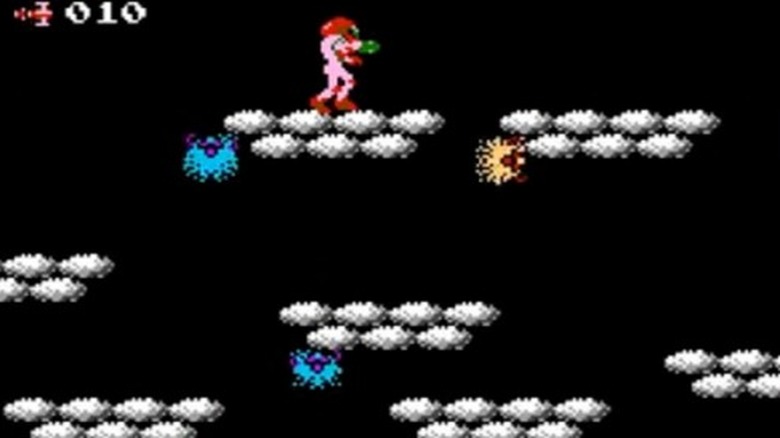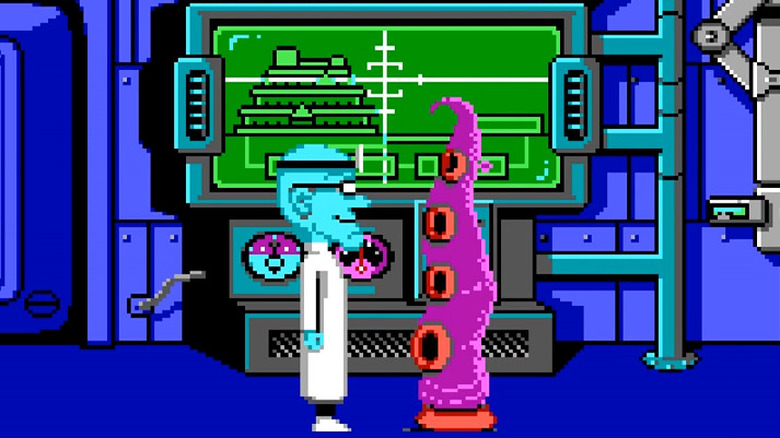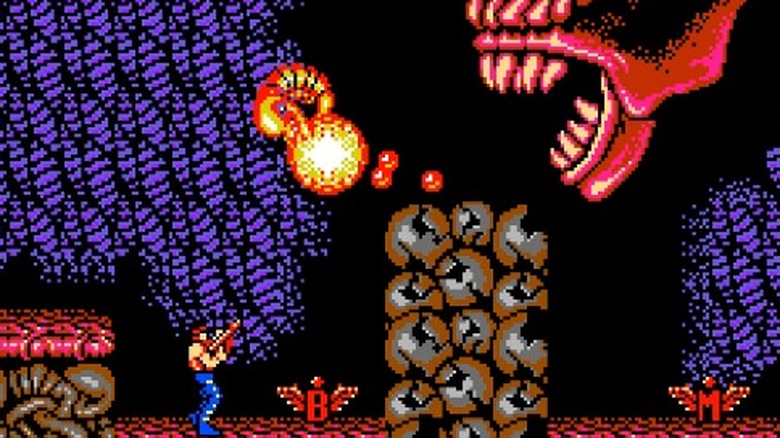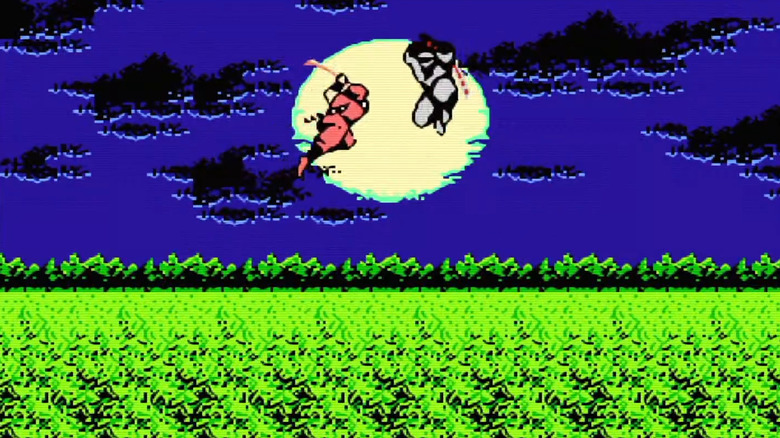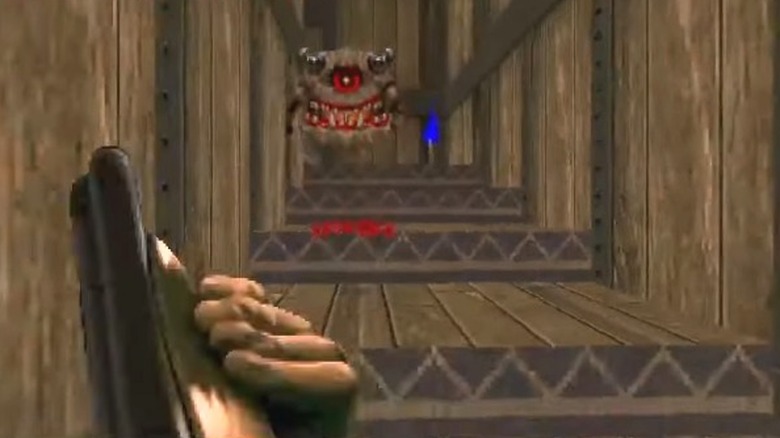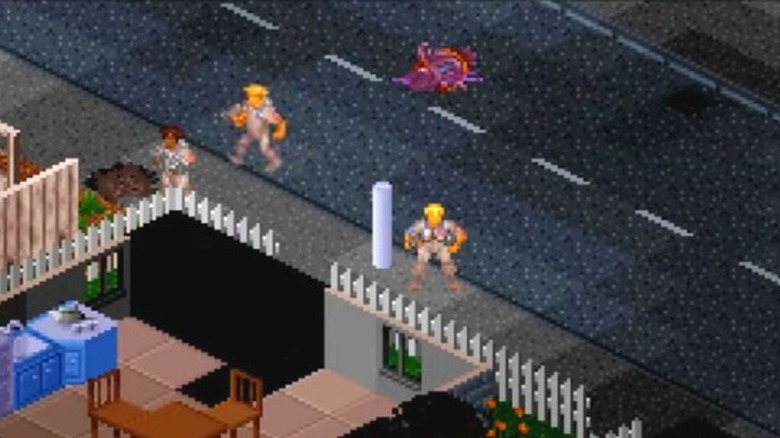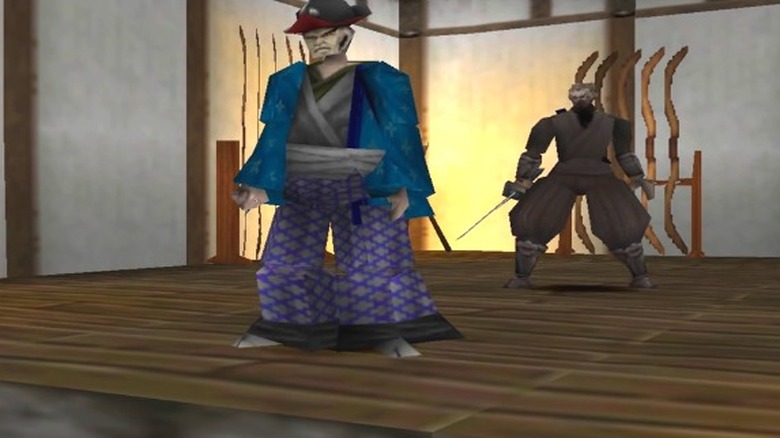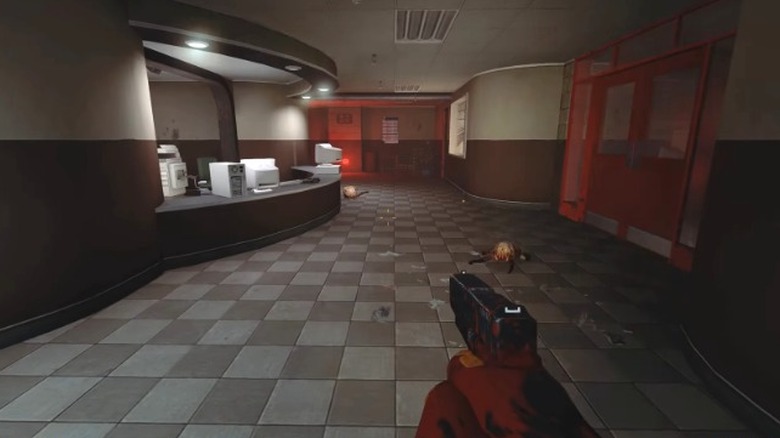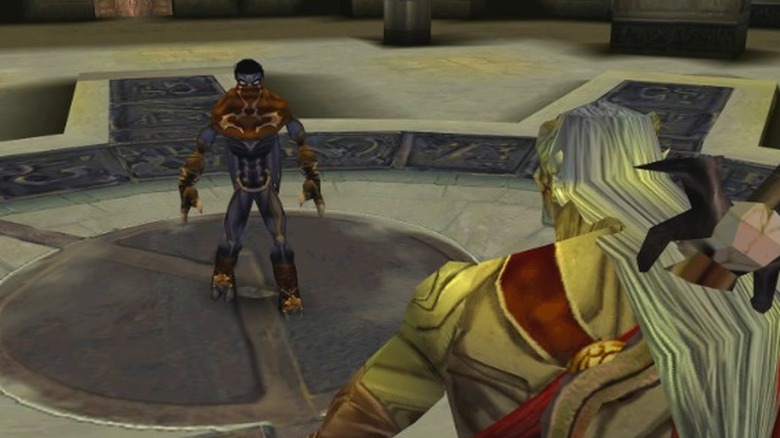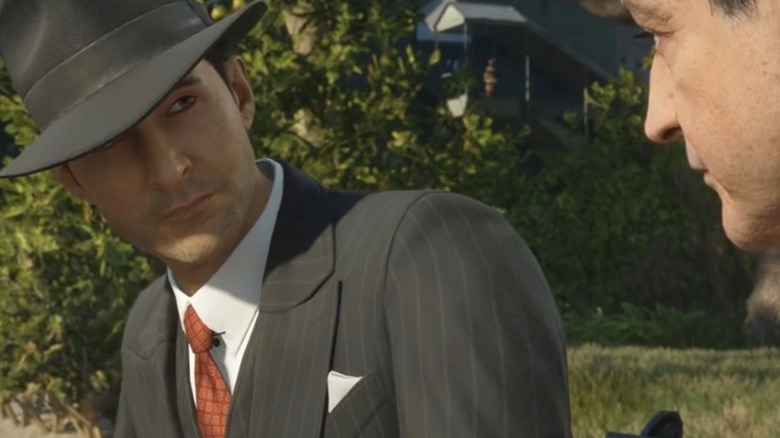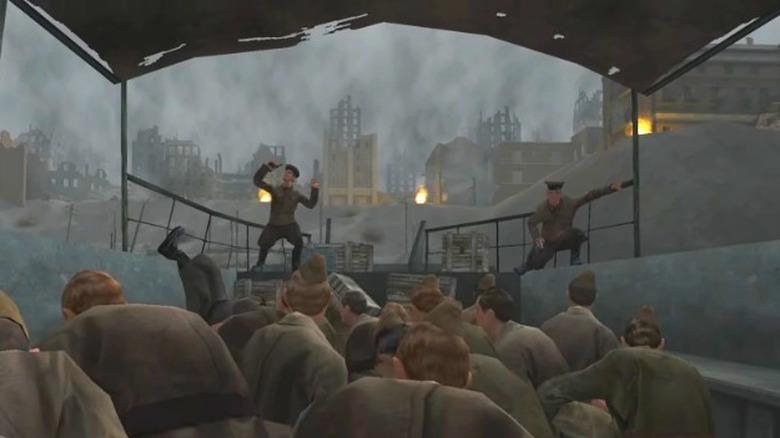Classic Games That Could Be Adapted Into Successful TV Series
In recent years, the game industry has produced some fantastic narrative-focused games. The positive reception of these stories has led to the adaptation of critically acclaimed video game franchises like "The Last of Us" and "Fallout" by different streaming services. However, these productions might not have been greenlit if it wasn't for the success of previous adaptations such as Netflix's "Arcane" or "Castlevania," which received very positive reviews from critics and fans.
The first of these recent adaptations, "Castlevania," was based on a game released for the Nintendo Entertainment System back in 1989 — "Castlevania 3: Dracula's Curse." At that time, game developers had to deal with various technological limitations. As a result, the game has iconic imagery and music but almost no story. This provided writers with the freedom necessary to write a great plot while keeping the most memorable elements from the source material intact.
Following a similar approach could allow streaming services to successfully adapt classic titles, such as the unsettling alien labyrinths of "Metroid" or the hilariously absurd characters of "Maniac Mansion" into an engaging series. Producers could also take advantage of the atmospheric environments of the dystopian world of "Half-Life" or the epic story told in "Mafia." Here are some classic games that could be adapted into successful series.
King's Quest (1984)
In the early 1980s, video games had very little to offer in terms of graphics. In fact, popular games like "Zork" and "The Hitchhiker's Guide to the Galaxy" could only be played by reading text and typing the actions player's wanted to perform. These types of games were surprisingly immersive but often extremely difficult. The dominance of the text-based adventure genre came to an end a few years later when fantasy fan Roberta Williams developed "King's Quest." In this game, players were finally able to control an animated character and explore an open map. The game's unique world and dark sense of humor helped make it a success, spawning different sequels, game series like "Space Quest," "Police Quest," and even competitors. In many ways, it helped create a new genre.
In "King's Quest," players' must explore the Kingdom of Daventry and retrieve three magical items to bring prosperity to its people. However, the game is filled with threats, and making the wrong choice or simply stepping on the wrong spot could end up in the avatar's demise. Sir Graham, the game protagonist, can die by falling on a crocodile-infested moat, being crushed under a rock, and by getting captured by an evil witch. In a way, the world of "King's Quest" resembles movies like "Final Destination" — just with much better writing.
The combination of dark humor and subversion of fantasy tropes makes "King's Quest" not only a classic but also the ideal basis for a fantasy comedy series — possibly one with a similar tone to movies like "Shrek" or shows such as "Galavant."
Metroid (1986)
In the early days of the NES, action games consisted of 2D avatars scrolling through levels filled with different types of enemies. However, one of the most important innovations at the time was the introduction of complex labyrinths the player had to explore to acquire more powerful equipment. "Metroid," the first game of this kind, tells the story of Samus, a skilled bounty hunter that has to infiltrate and destroy an alien base trying to weaponize a parasitic life form. The protagonist starts the story severely outnumbered, but by investigating the different chambers and collecting additional weaponry, she manages to defeat her powerful enemies and fulfill her mission.
A live-action adaptation could easily be pitched as a sort of "Die Hard" set in space. The original title has little to no story, but writers could draw inspiration from the numerous sequels that followed. That said, the "Metroid" franchise and, in particular, "Metroid: Other M," are infamous for their questionable narrative choices and performances, so it might be better if the potential showrunners take some liberties and don't follow the story too strictly.
The original setting, in which Samus has to use both her intelligence and combat skills to overcome multiple challenges, should be enough to build an excellent sci-fi thriller around it. It also gives writers the opportunity to honor one of the first female protagonists in video game history.
Maniac Mansion (1987)
The success of Sierra's graphic adventures such as "King's Quest" motivated other developers to develop their own take on the genre. One of the most interesting examples is Lucasfilm's "Maniac Mansion," a game that switches the walk-and-type gameplay format for the now widely used point-and-click controls. It also allowed players to choose from a team of different characters, each with their own set of skills to help solve the various puzzles that awaited them. The game follows Dave Miller, who must ally with two friends in an attempt to rescue his girlfriend Sandy, who was kidnapped by a mad scientist who lives in a labyrinthian mansion.
The game is an enthusiastic parody of old sci-fi B movies and the slasher genre. This also applies to the cast of characters, which features classic 1980s archetypes frequently seen in movies of the era, including a computer geek, the singer of a punk band, and the obligatory surfer guy. Interestingly enough, "Maniac Mansion" was adapted into a sitcom only a few years after its release. This genre, however, doesn't fit the weirdness and dark comedy tones of the original material.
A modern adaptation that focuses on the mystery elements, the character archetypes, and the dark sense of humor would definitely provide audiences with an intriguing setting they have not seen before, as well as multiple Easter eggs for those familiar with the original game.
Contra (1988)
A more traditional take on action games, the side-scrolling shooter "Contra" revolves around two commandos fighting an organization trying to destroy humanity. The protagonists' design was heavily inspired by contemporary action stars such as Arnold Schwarzenegger and Sylvester Stallone, as they appeared in films like "Commando" and "Rambo: First Blood Part II" respectively. The pair needs to shoot their way through waves of soldiers armed with futuristic technology. However, it's eventually revealed that the organization is being controlled by creatures from another planet, which closely resemble the xenomorphs from the "Alien" franchise. The game is fast-paced, action-oriented, and unforgiving in regard to difficulty.
The objective of the game was not just to replicate the style of the classic action movies from the 1980s. Instead, the "Contra" franchise incorporates every element from these films, like armies of generic soldiers, heavy weaponry, alien monsters, and increasing numbers of enemies to ridiculous levels. As such, "Contra" might be better suited for an R-rated satirical adaptation in the same vein as "Tropic Thunder," serving as a way to introduce new generations to the tropes of the 1980s action genre — not without a sense of irony.
Ninja Gaiden (1989)
The first thing players of the original "Ninja Gaiden" saw when they started the game was an impressive cutscene depicting a duel between two swordsmen while some exciting music played in the background. The gameplay may be rather simple, as it mostly consists of a ninja jumping between platforms and striking enemies with his sword and magic spells. Still, as the introductory cutscene suggests, the main attraction of the game is its plot.
"Ninja Gaiden" tells the story of a young ninja named Ryu Hayabusa who has to travel to an ancient temple to stop a powerful demon from being awakened. It also involves archeologists, secret government agencies, and a revenge plot. In addition, the game is filled with so many twists and plot holes that at times the story becomes a bit confusing.
Regardless of its convoluted story, "Ninja Gaiden" is considered among the best games ever released on the NES. Its challenging but rewarding gameplay, eerie creature designs, and outstanding original soundtrack made playing the game so engaging that it was easy to ignore the many weaknesses of its plot. It might not be that difficult for a team of experienced writers to fix the story of "Ninja Gaiden." As such, a live-action adaptation that takes advantage of different locations Ryu has to visit during his journey could not only become a successful and unique action fantasy but could also give the ninja genre the second chance it deserves.
Doom (1993)
"Doom" may be remembered as the game that popularized the first-person shooter genre, but it was also a wonderfully crafted action horror title. The original game puts the player in control of the last surviving member of a team of space marines exploring the Mars moon of Phobos, which is now infested with possessed soldiers and increasingly powerful demons. "Doom" was a scary game that relied on its otherworldly level, sound, and creature design to trigger a sense of dread in the player. At the same time, the exciting soundtrack — which at times sounds suspiciously similar to classic rock songs — kept the player motivated to move forward. Since its release in 1993, the series has been reimagined as both a survival horror and a straightforward action game, but a series could return the game to its atmospheric thriller roots.
The first thing writers trying to make a "Doom" series should do is forget everything they know about the terrible 2005 movie featuring Dwayne "The Rock" Johnson. Apart from the experimental first-person perspective scene, the movie fails in almost every aspect, from the acting to the script. Perhaps the worst aspect of the entire project is that it has almost nothing to do with the game. A series that tries to adapt this material should probably take a more straightforward approach to recreate the most memorable environments and monsters from the series. If it manages to be as intriguing and scary as the original game was, the series would be a success among sci-fi horror enthusiasts, as well as fans of the original game and its more recent releases.
X-Com (1994)
In the early 1990s, gamers were no strangers to the strategy genre. Games like "Civilization" and "Dune" had found success, but in 1994 British developer Mythos Games decided to change things a little and combine turn-based strategy with base management mechanics. The result was "X-COM: UFO Defense," a title in which the player has to fight an alien invasion by researching the enemy's technology and turning it against them. While the original plot is rather simple, the following installments provided a more ambitious story exploring complex themes, from the costs of winning a war to the extent that a body can be modified before it stops being human.
Studios have tried to create series revolving around alien invasions before. In the 1980s, the mini-series "V" followed a group of civilians who try to prove that human-looking visitors from another planet were actually trying to take over the world. In the early 2010s, the Steven Spielberg-produced "Falling Skies" told the story of how humanity joins forces with other species of aliens to free their planet from their new Overlords. An "X-Com" series could take advantage of the everlasting interest audiences have for alien invasion stories and bring back the genre to the mini-series format. However, instead of badly equipped rebels, the show could take the perspective of the X-Com organization, a multi-nationally funded team of both researchers and soldiers that slowly uncover and foil the plans of the invaders.
Future seasons could also follow the plot of the 2016 entry "XCOM 2," which sees humanity being ruled by a dystopian regime, using the remaining forces of X-Com to launch one last counter-attack.
Tenchu (1998)
After the release of consoles like the Playstation and the Nintendo 64, the gaming landscape changed considerably. Video game companies began to abandon the concept of 2D titles and focused on developing games that took advantage of 3D graphics. This time of innovation saw the release of the first 3D platformers and fighting games. Interestingly enough, one of the genres that took advantage of both the capabilities and limitations of the technology was stealth games.
"Tenchu," for example, revolved around different missions in which the player had to remain hidden from enemies until they reached their target. The game told the story of Rikimaru, a ninja assassin with a strict code of honor but also outdated worldviews. While the game's story doesn't put too much focus on this last aspect, a live-action adaptation could be an excellent way to deconstruct the antihero trope. It would also allow viewers to explore the culture of feudal Japan and its mythology as the protagonist's mission evolves from assassinating corrupted politicians to slowly uncovering a nefarious plan involving demonic entities.
Half-Life (1998)
In the late 1990s, Valve developed a game that tried to provide a fresh take on the first-person shooter genre. In "Half-Life," players take the role of Gordon Freeman, a theoretical physicist who has to learn quickly how to use multiple weapons when a portal to another dimension infests the research facilities where he works with dangerous alien creatures. Despite this simple set-up, the story of "Half-Life" grows in complexity as the sequel sees Freeman transform from survivor to the unlikely leader of a revolution against a dystopian regime. In addition, the excellent environment and sound design managed to capture the player's attention, providing a deeply immersive experience.
As with most first-person shooters, the first challenge for writers adapting "Half-Life" into a series would be giving the protagonist — who never says a word in the game — a voice. Video game franchises like "BioShock" have managed to give remarkable voice-over performances to the protagonist. On the other hand, the live-action adaptation of the celebrated game series "Halo" was criticized for demystifying its beloved protagonist by offering too much information about him.
In the case of "Half-Life," it might be wise to give the protagonist a voice while still keeping some level of mystery, allowing the audience to learn about this intriguing world from the perspective of Gordon Freeman.
Soul Reaver (1999)
"Legacy of Kain: Soul Reaver" tells the story of Raziel, who is betrayed and apparently killed by his king, a powerful vampire named Kain. Raziel awakes hundreds of years later, transformed into a wraith that has to consume the souls of his enemies to survive while also being able to visit both the real world and the spectral realm. Through the eyes of Raziel, the player explores a world that has seen vampires mutate into unrecognizable monsters, still in a fight for survival with humans. The gothic-fantasy world of "Soul Reaver" can be at times both fascinating and gruesome while still telling a compelling story of revenge.
An adaptation of "Soul Reaver," whether it's a live-action series or an animated production, should take advantage of the uncanniness of its world and, most importantly, the strange creatures that populate it. Whether Raziel is in the physical or the spirit world, he's constantly encountering unsettling creatures that can't be easily defeated, despite his newly acquired abilities and the powerful sword that gives the game its title.
The eerie tale could become an amazing series in the hands of a director like Guillermo Del Toro, although showrunners like the Duffer brothers have already proven with "Stranger Things" that they can tell engaging stories set in terrifying parallel worlds.
Mafia (2002)
In the early 2000s, Rockstar was invested in providing city-focused open-world games with their "Grand Theft Auto" titles. Games like "Grand Theft Auto: Vice City" and "Grand Theft Auto: San Andreas" have a compelling story, but most of the fun comes from completing missions, trying different vehicles, and visiting the various locations available in the city. In 2002, however, Illusion Softworks released "Mafia," an open-world game that managed to improve upon what Rockstar had built. While the game doesn't offer a map as big or interactive as their contemporary "Grand Theft Auto" titles, it does immerse players in one of the best mobster stories told outside of cinemas.
In "Mafia," a struggling taxi driver named Tommy Angelo finds himself joining the Salieri crime family that rules the fictional city of Lost Heaven during the prohibition era. However, instead of following the classic tale of the rise and fall of a criminal mastermind like in "Scarface," "Mafia" uses the point of view of Tommy to analyze how each member of the crime family reacts to different moral dilemmas and how this ends up changing the organization forever. The resulting story draws heavily from Martin Scorsese's "Goodfellas" but has the advantage of being able to tell its story through several hours of gameplay.
A miniseries adaptation would allow the story of Tommy and the Salieri family to be told at a slow but compelling pace, allowing viewers to get to know the different characters while the story builds up towards its fantastic ending.
Call of Duty (2003)
As one of the most successful gaming franchises of all time, "Call of Duty" has changed considerably since the early 2000s. Initially, the game focused on using the first-person perspective as well as the clever use of environmental action and sound design to immerse players into the crude reality of the battlefield during World War 2. The recreation of the Battle of Stalingrad alone, for example, is a masterclass in video game storytelling and immersion, despite the considerable limitations of the era. This sequence helped make the original "Call of Duty" one of the most memorable first-person shooters ever, but the game goes beyond that and follows the Soviet, American, and British campaigns until the climactic ending of the war when the victory banner was placed in the Reichstag building in Berlin.
World War 2 dramas are often depicted in film and TV. Having said that, Hollywood has an excellent record in regards to telling stories set in this period. Movies like "Saving Private Ryan" or "Fury" and TV series like "Band of Brothers" have managed to depict the reality of war in a realistic manner while still offering an engaging story and powerful themes.
Retelling the story of the first "Call of Duty" game and adopting its immersive cinematic style could allow audiences to experience one of the most intense TV dramas in recent years. It would also be an excellent opportunity for a reunion between Jason Statham and Giovanni Ribisi, who provided the voices for the protagonists during the development of the original game.
